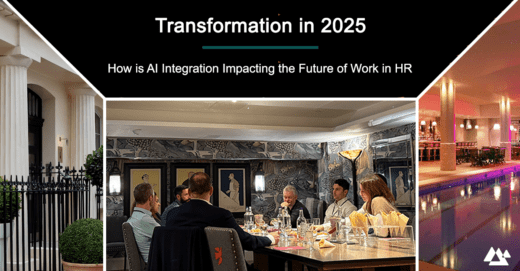“Your future workforce can only be as strong as the data you’re using to predict it today.”
Organisations are increasingly understanding the need to predict their future workforce needs in order to sustain their position and growth in the market. However, many struggle to approach this strategically, leading to critical questions about how to create workforce plans that are truly fit for purpose.
We recently partnered with Beamery, the leading Talent Lifecycle Management Platform, to host an exclusive VIP roundtable discussion. Held across two rooms, this event brought together over 25 People and Talent leaders to explore how to align strategic workforce planning with overall business objectives, whilst leveraging people analytics data to ensure these plans can sustain long-term growth.
Co-hosted by James Ballard (Co-Founder & Managing Partner at Annapurna) and Magnus Okuonghae (Senior Manager at Annapurna) with expert insights from Hugo Marshall (Global Manager, Account Strategists at Beamery), Nick Timpson (Account Director at Beamery), and Renata Massoud (Global Enterprise Account Strategist at Beamery), the conversation sparked invaluable insights and solutions for tackling common challenges in workforce planning, which led to these key takeaways:
- There can be No Strategic Workforce Plan Without Clear Business Objectives
- Data and Agility are King
- AI Is Here to Support, Not Make Decisions
There can be No Strategic Workforce Plan Without Clear Business Objectives
A recurring theme throughout the evening was the need for clear business objectives in order to create an effective strategic workforce plan. Without a clear understanding of where and what the business wants to achieve and when, no amount of people data can predict what you’ll need in terms of skills, as there’s no end destination in sight.
The journey goes beyond simply setting clear business objectives. Ensuring that all levels of the organisation are informed of the objectives set is equally critical. If business goals are not set and understood, teams operate in silos, and efforts can become misaligned or wasted.
The solution? Every layer of the organisation must be brought into the fold, being transparent with the targets you’re setting for the organisation and how you want to achieve them. Companies need to create clear communication strategies that ensure all employees understand how their roles contribute to long-term goals.
What does ‘talent’ really mean for individual teams? One may value different skills and an emphasis on the importance of collective success over individual departmental wins. One attendee noted how they got their company collectively behind one target by creating a culture where managers understood that talent didn’t belong to them – it belonged to the company. HR and Talent Acquisition should be empowered to move people into roles where they are most valuable, and this shift in mindset can allow everyone to rally behind one mission.
Data and Agility are King
Lack of reliable data emerged as a major barrier to effective workforce planning. The sole purpose of strategic workforce planning is to create a system that makes objective decisions based on reliable data to identify the future needs of the company to hit its goals.
However, many organisations rely on (or are simply hampered by) ambiguous or insufficient people data, which leads to subjective decision making (AKA complete guesswork) which provides no ground for predicting future needs as you’re not tying the prediction against anything relevant or tangible.
By leveraging accurate people data, we can create predictable roadmaps that are agile in their approach allowing changes in direction to be actioned when and where needed – roundabouts instead of one-way lanes. As explored in a recent episode of our ERUPT podcast with Gergo Safar (Strategic Workforce Manager at BT) too, it’s the adaptability of a workforce plan that is more crucial than its accuracy.
Too often we make the mistake of getting so transfixed on making efficiencies that we forget what we’re creating the efficiency for. It’s no good to the organisation or the overall business objectives if you’re simply creating efficiencies to ‘save time’ and there’s no plan on what you’ll do with the time you’ve regained to create further productivity or progress towards the company’s targets. Is time-saving the priority right now? Or maybe its cost-cutting efficiencies required to reinvest in other areas of the business? Identifying the ‘why?’ is key.
By setting efficiency goals upfront, organisations can better communicate the value of these initiatives to the C-suite and ensure that all teams are aligned on how the gained time or resources will be reinvested to accelerate growth plans.
AI Is Here to Support, Not Make Decisions
The discussion naturally turned to AI and its role in workforce planning. Whilst AI can streamline data collection and processing, it should be viewed as a supporting tool rather than a decision-maker. AI is great at making recommendations based on what we know, but it struggles to predict the unknown and its susceptibility to bias is still one to be argued for sure.
On the subject of AI, our guests delved into the growing need for organisations to start taking strategic workforce planning seriously as it’ll help organisations prepare for the future. As AI continues to revolutionise the working world as we know it, the group emphasised the need to identify the roles under threat of continued AI development so they can begin the up-skilling process to provide them with a skill set that makes them useful to the organisation going forward. This feeds back into the process that SWP helps put people in the places they’ll thrive in and be of most use in.
Looking to become a skills-based organisation, stay ahead of the curve, and make the most out of your people data? Get in touch with Beamery.




